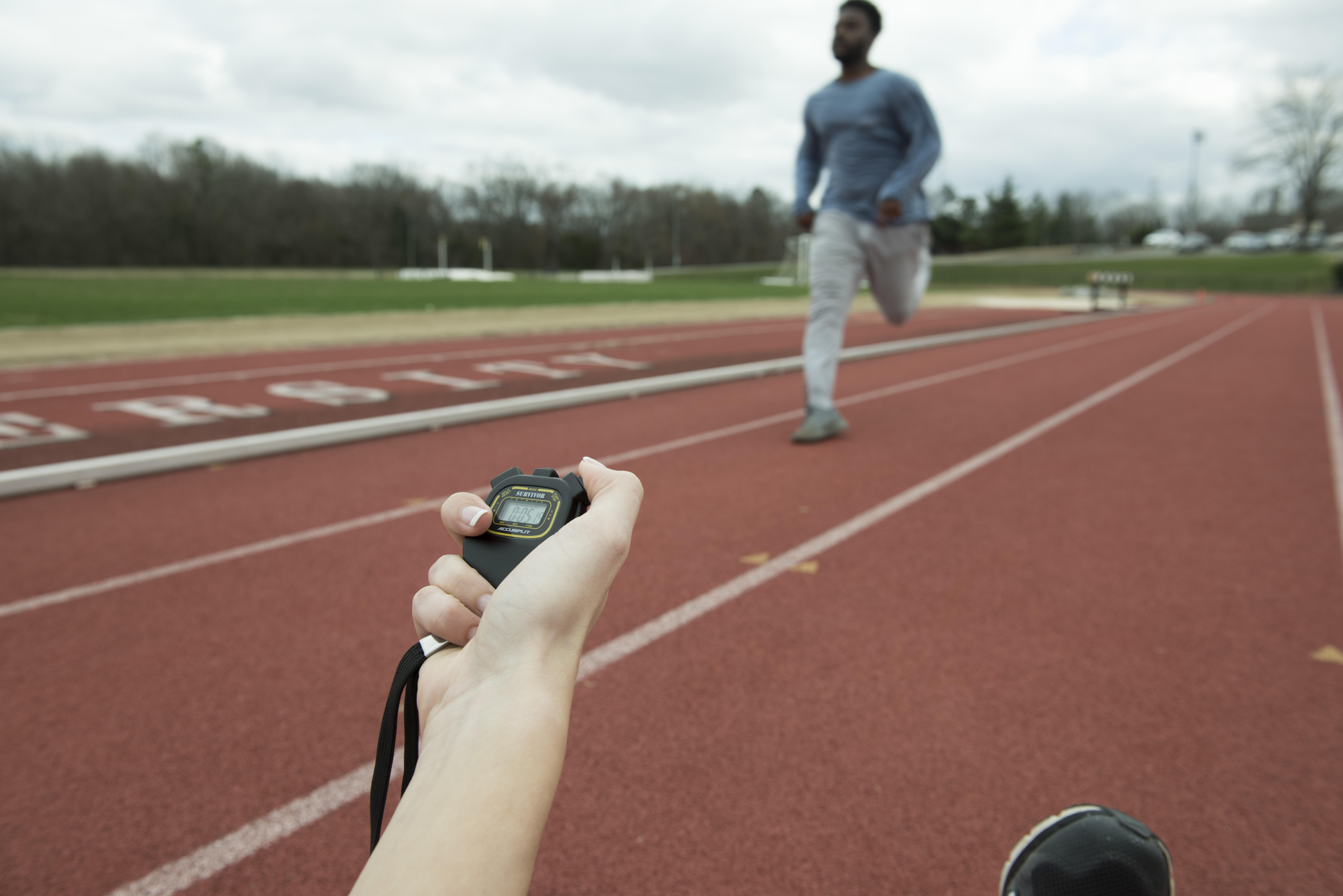Assistant Professors of Exercise Science Simon Higgins and Titch Madzima and Director of Campus Recreation and Wellness Larry Mellinger offer tips for staying active at home during this period of social distancing.
Staying home doesn’t have to mean compromising all of your daily routines, and Elon’s Exercise Science Department is offering tips for staying fit, while maintaining social distancing.
First, staying active in and around your home is about more than just physical fitness, says Assistant Professor of Exercise Science Simon Higgins.
“Most people are pretty aware of the benefits of physical activity from a weight management standpoint,” Higgins said. “But I think more pertinent to the situation we’re in right now, maintaining high levels of physical activity can help boost and maintain immune function, can reduce rates of depression and anxiety, helps with quality sleep, and improves mood.”
Higgins also recommends being active outdoors to take advantage of the benefits of nature and fresh air, which include positive impacts on mood and anxiety levels.
And while it’s still most important to continue to follow CDC guidelines for preventing the spread of COVID-19 – social distancing and washing your hands regularly – exercising can also play a key role in the fight against the virus.
“We talk about exercise as medicine because exercise is actually a stressor on your body in many ways,” said Assistant Professor of Exercise Science Titch Madzima. “It trains your body to handle stressors, and infections and diseases are examples of stressors on your body. And so when you do exercise and stay physically active, you’re actually training your body to handle stressors.”
Both Higgins and Madzima recommend being physically active for at least a total of 150 minutes each week. Since every person’s body is different, it’s important to consider your personal limitations before determining how to proceed with a workout program, even if that means reaching out to your health provider for further guidance.
“The thing I worry about when people are stuck at home is they throw on the TV and some kind of workout program they’ve never done before and go straight into a really high intensity,” Higgins said. “When you have individuals who are high-risk already or have never exercised before that go straight to that intensity, their acute risk of not just musculoskeletal injury, but some sort of cardiac event goes up astronomically.”

Higgins says those who are unsure of their physical fitness should start at a low intensity and progress over weeks, starting at an effort level of three to four out of 10 and working up to level five or six for a majority of your activity.
Once you’ve determined your starting point, Higgins and Madzima say there are several things to consider when creating a workout. A typical program should include a combination of cardio (running, biking, jumping rope, etc.) and at least two days per week of strength training. Higgins says to pick three or four body weight exercises like squats, pullups, pushups and crunches and perform each at a controlled pace for 30 seconds or 10 repetitions. Be sure to focus on breathing – inhaling as you squat or lower the weight and exhale as you stand or push the weight – to prevent blood pressure issues or dizziness. Then, take a 30- to 60-second rest between each exercise and repeat for two to four rounds.
If you’re looking to add resistance to your workouts, Higgins and Madzima recommended using household items like cans, jugs of water or sand, and even small humans to serve as weights.
More so than the intensity of workouts, Madzima says consistency and routine are the keys to success when trying to maintain social distance while keeping up an active lifestyle.
“I think when it comes to physical activity and exercise and getting the benefits from those, it’s not necessarily so much about going really hard for an event such as a wedding or for spring break because that can lead to burnout, and it’s tough to sustain,” Madzima said. “But if you do it consistently and do a little each day or most days of the week, that’s definitely more sustainable, and you get the most benefits out of that.”
For more workout inspiration, Higgins and Madzima have offered these free resources:
- Functional Movement: offers an exercise library of body weight and equipment-based movements
- MyTPI: body weight and equipment-based movements related to golf mechanics
- Navy Operational Fitness and Fueling System: body weight and band workouts developed for Navy sailors and health and fitness professionals
- 7 Minute Workout: a free app located in the Apple App Store and Google Play stores
The Department of Exercise Science has also created the Exercise is Medicine initiative to help people of all ages and populations stay active. The site offers guidelines for students, faculty and staff, as well as a variety of age groups and populations, about how to approach their own workout plans.
And while all Campus Recreation and Wellness facilities have been closed as the university looks to prevent the spread of COVID-19, the department has developed a website of online resources to help people stay active during this period of social distancing. The department will soon begin posting home workout tips from its personal trainers and group exercise instructors on its Twitter and Facebook pages.
Director of Campus Recreation and Wellness Larry Mellinger hopes these efforts encourage everyone to find ways to stay physically active over the next few weeks.
“Get outdoors as much as possible, use whatever equipment you have available, be creative and have fun with it,” Mellinger said. “The key is to continue to prioritize exercise and movement as a regular part of your daily routine. If you start with that goal in mind, you’ll be amazed by what you will be able to do at home.”



